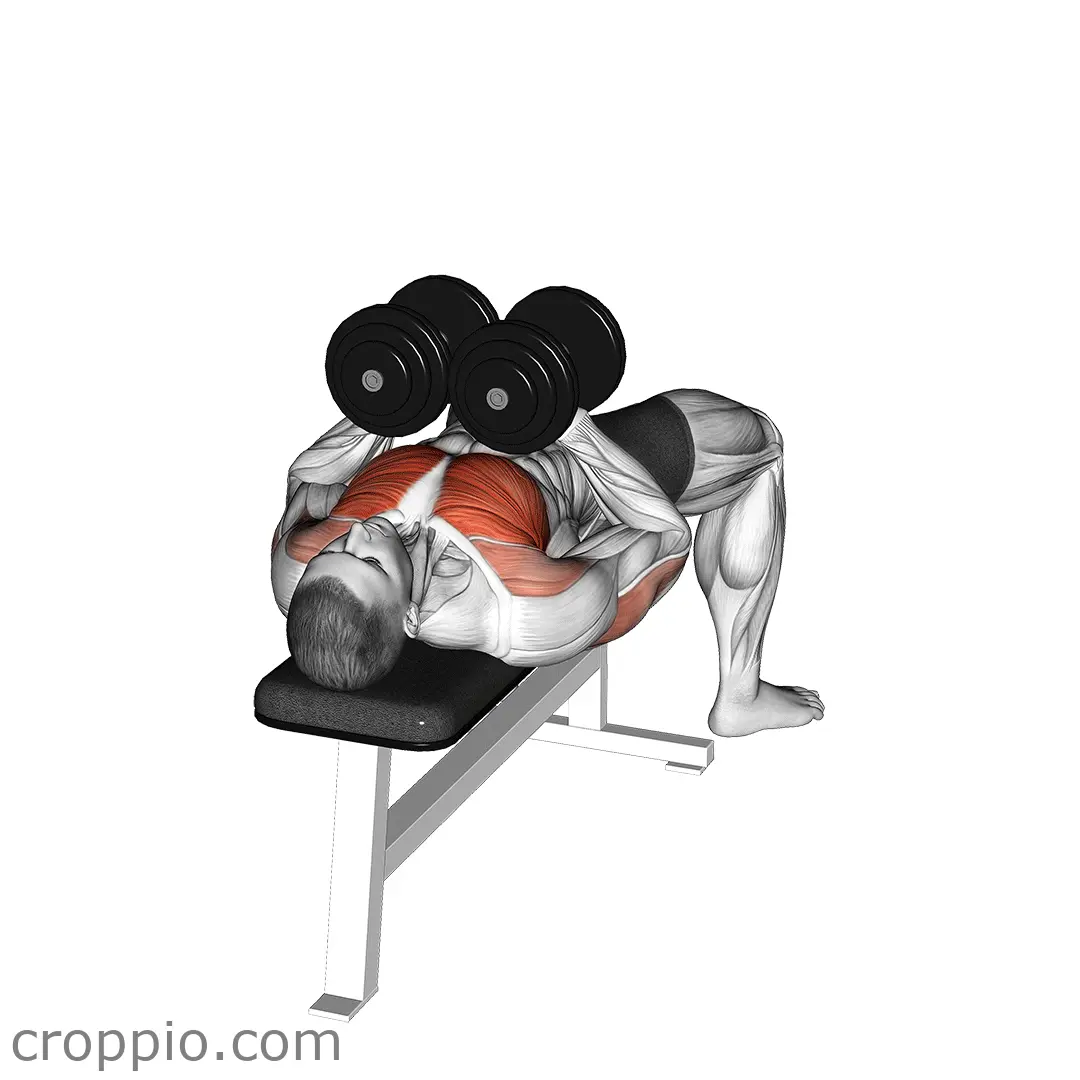Kettlebell Pullover

Muscles Involved
The kettlebell pullover is a versatile exercise that primarily targets the latissimus dorsi, the large muscles of the back that create a V-shape. Additionally, it engages secondary muscles including the triceps, pectorals, and stabilizers such as the core and shoulder muscles. This dynamic movement not only contributes to upper body strength but also enhances shoulder flexibility and stability.
Top Mistakes
- Improper back positioning: Arching or rounding the back excessively can lead to injury.
- Using too much weight: Overloading the kettlebell can compromise form and decrease workout effectiveness.
- Lifting the head during the movement: This can strain the neck; keep the head aligned with the spine instead.
- Neglecting core engagement: Failing to activate the core may lead to muscle compensation and loss of control during the movement.
Execution Tips
- Start by lying on your back on a flat surface, such as a mat, with your knees bent and feet flat on the ground.
- Hold the kettlebell with both hands above your chest, arms extended and maintaining a slight bend in the elbows.
- Engage your core and slowly lower the kettlebell behind your head while keeping your arms straight but not locked.
- Lower until you feel a comfortable stretch, usually just past your head, then reverse the motion, bringing the kettlebell back over your chest.
- Breath in while lowering and exhale when returning to the starting position to maintain rhythm.
Workouts
The kettlebell pullover can be integrated into a full-body workout or a dedicated upper body session. It is advisable to perform 3 to 4 sets of 8 to 12 repetitions, depending on your fitness level. As complementary exercises, consider pairing the pullover with push-ups, kettlebell rows, or dumbbell chest presses to create a balanced workout that emphasizes strength and stability across the upper body.
Conclusion
Incorporating the kettlebell pullover into your workout routine not only improves strength and stability in the upper body but also enhances flexibility in the shoulders and thoracic spine. By mastering proper technique and avoiding common mistakes, you can effectively use this exercise to build muscle and improve your overall fitness level.



